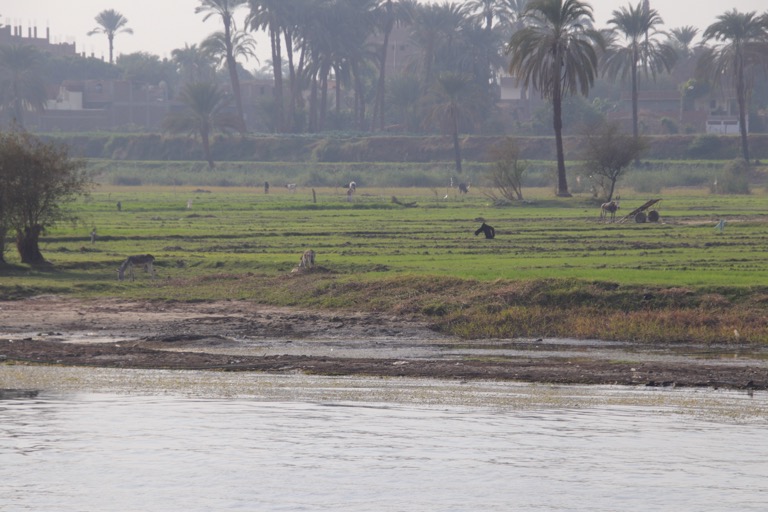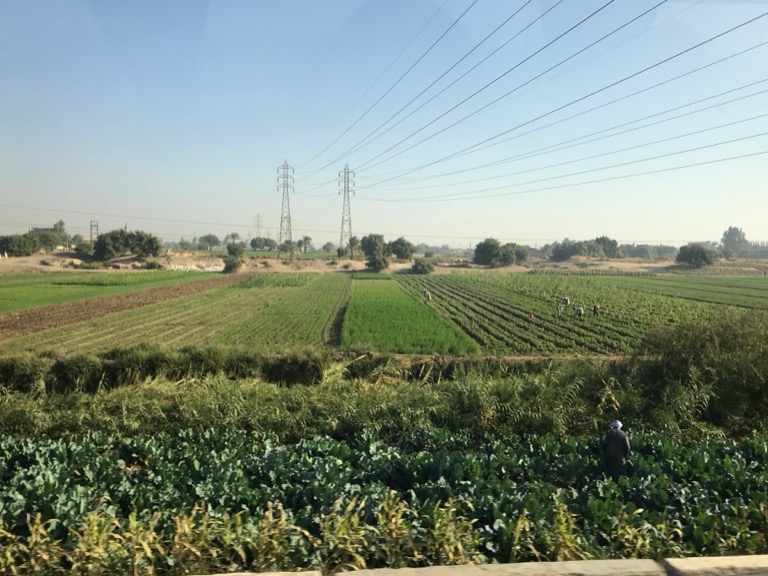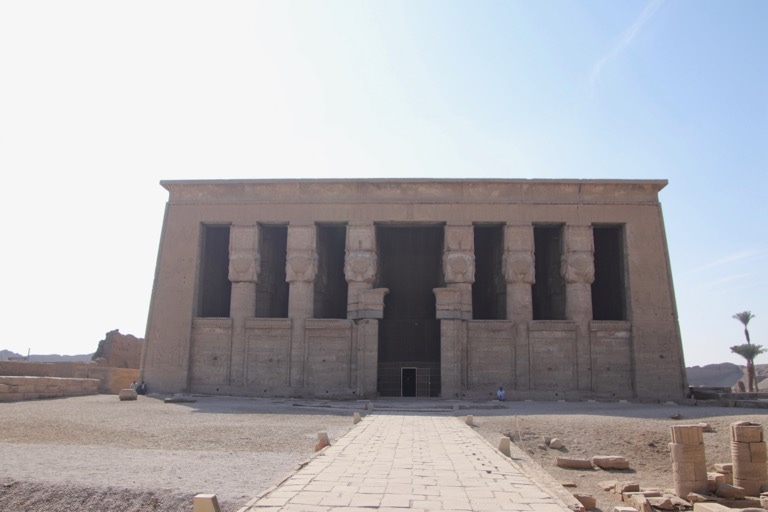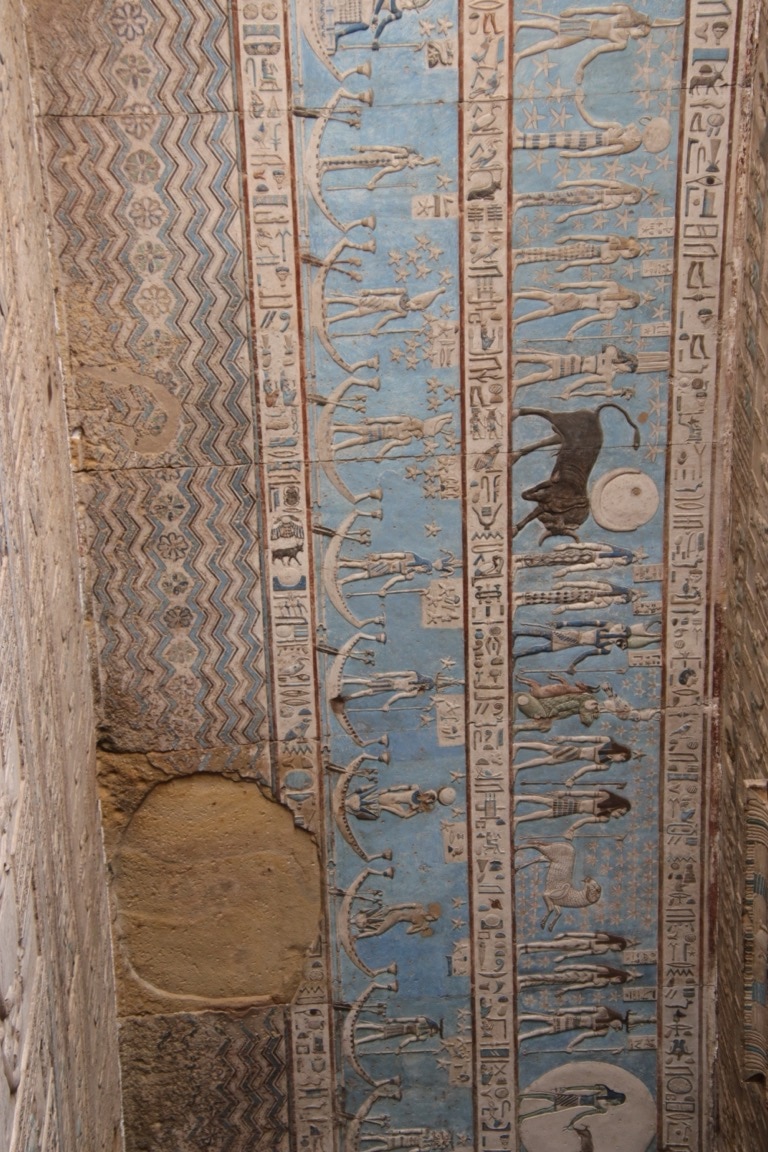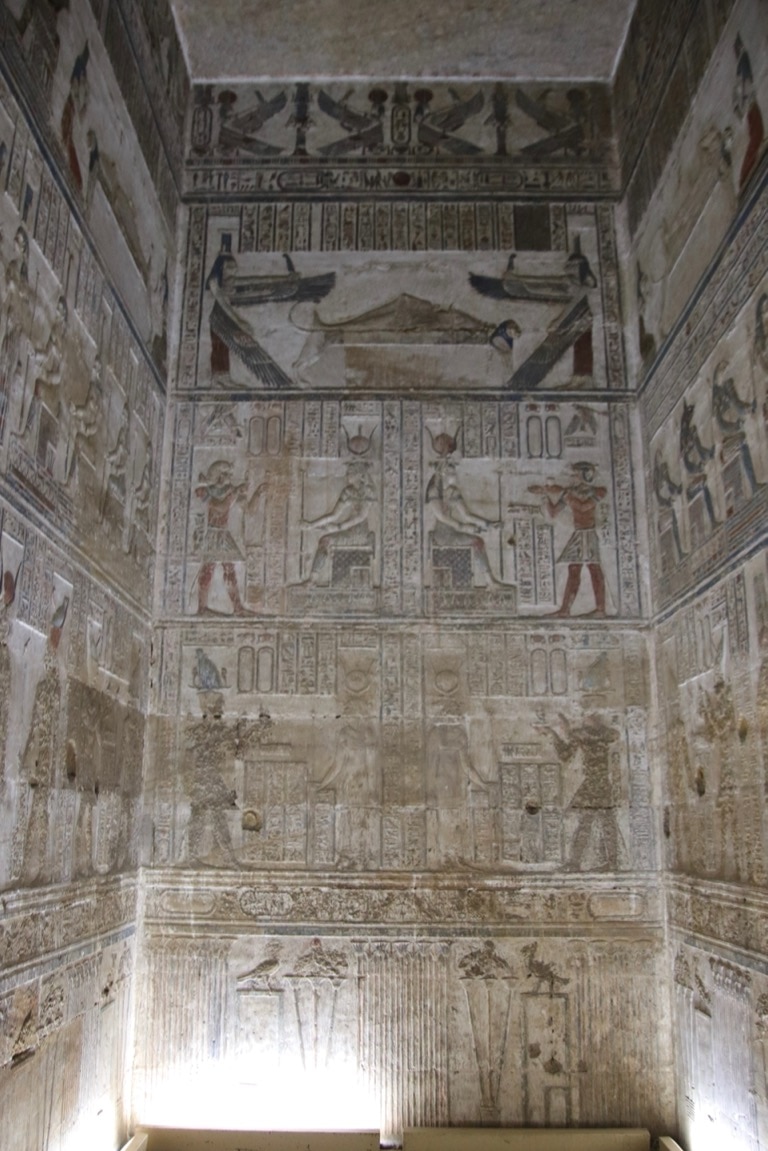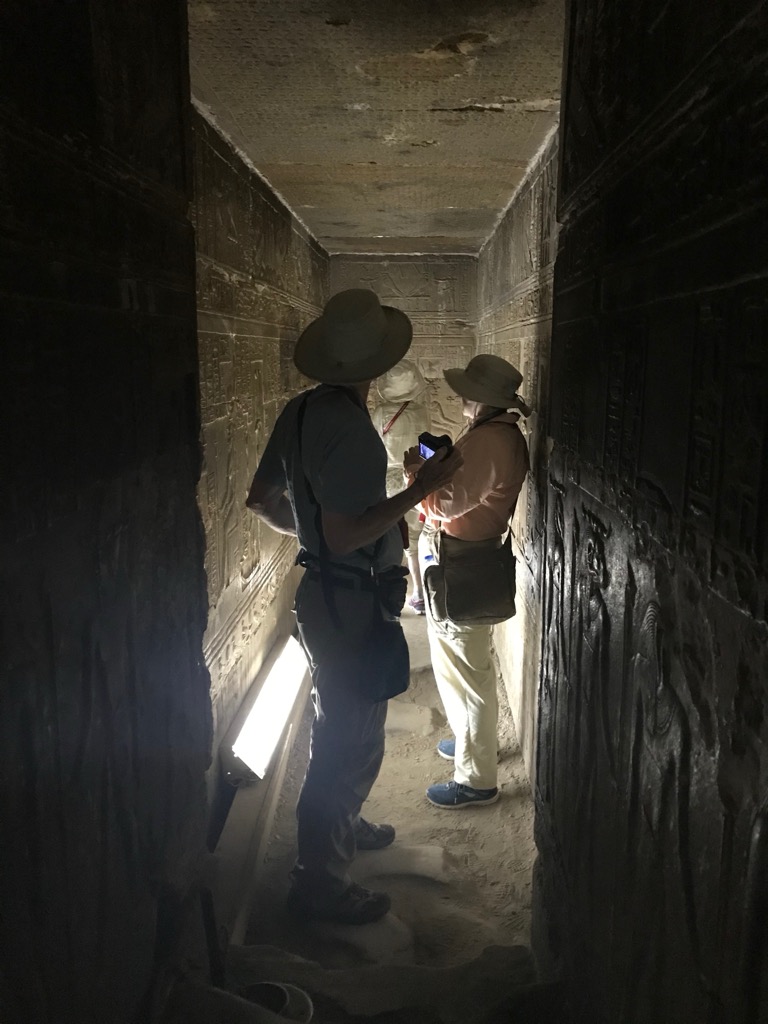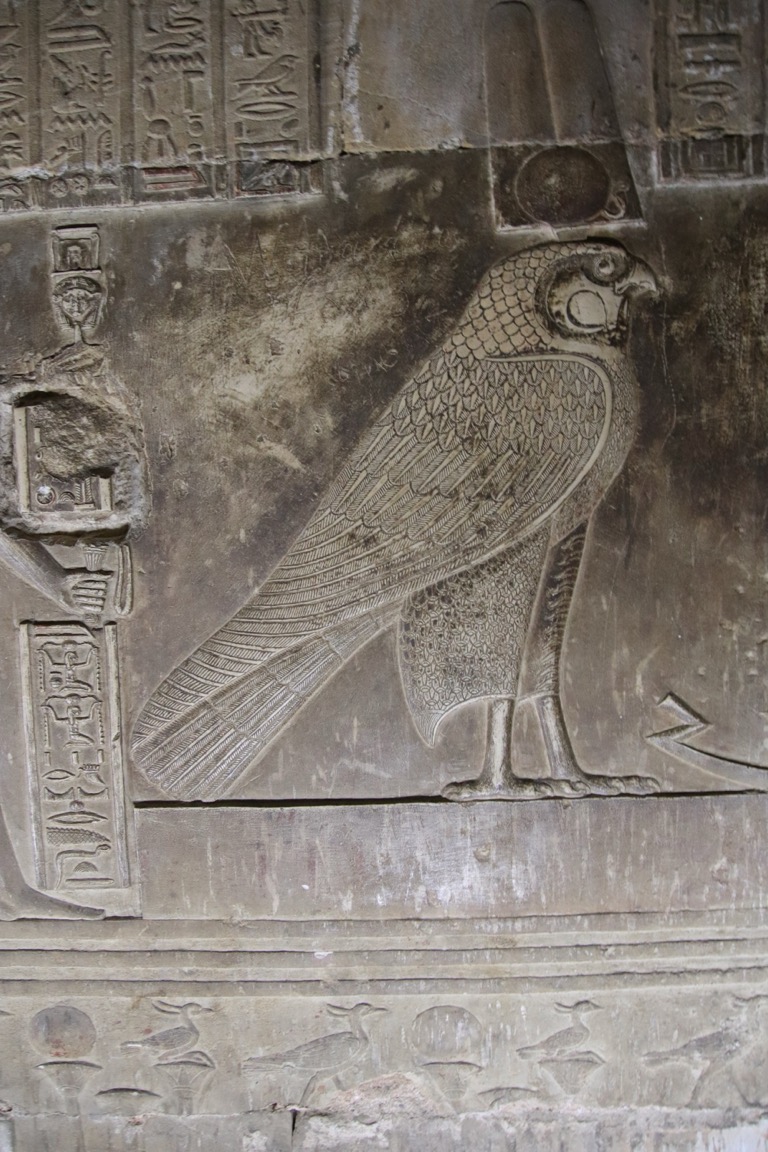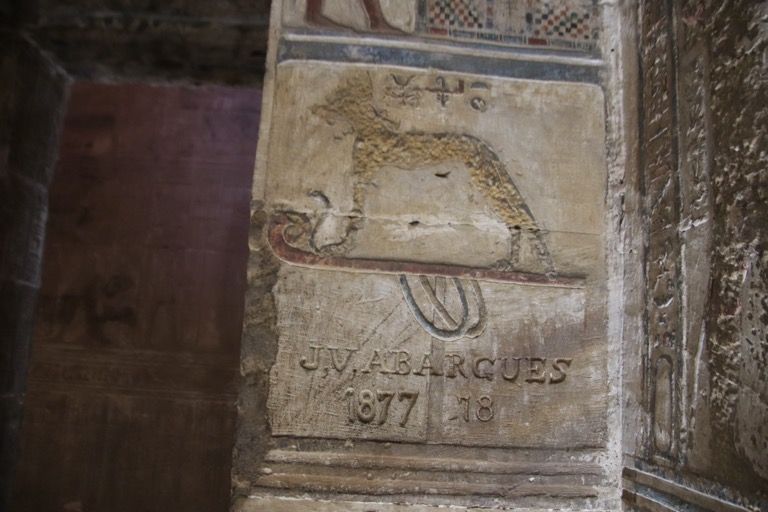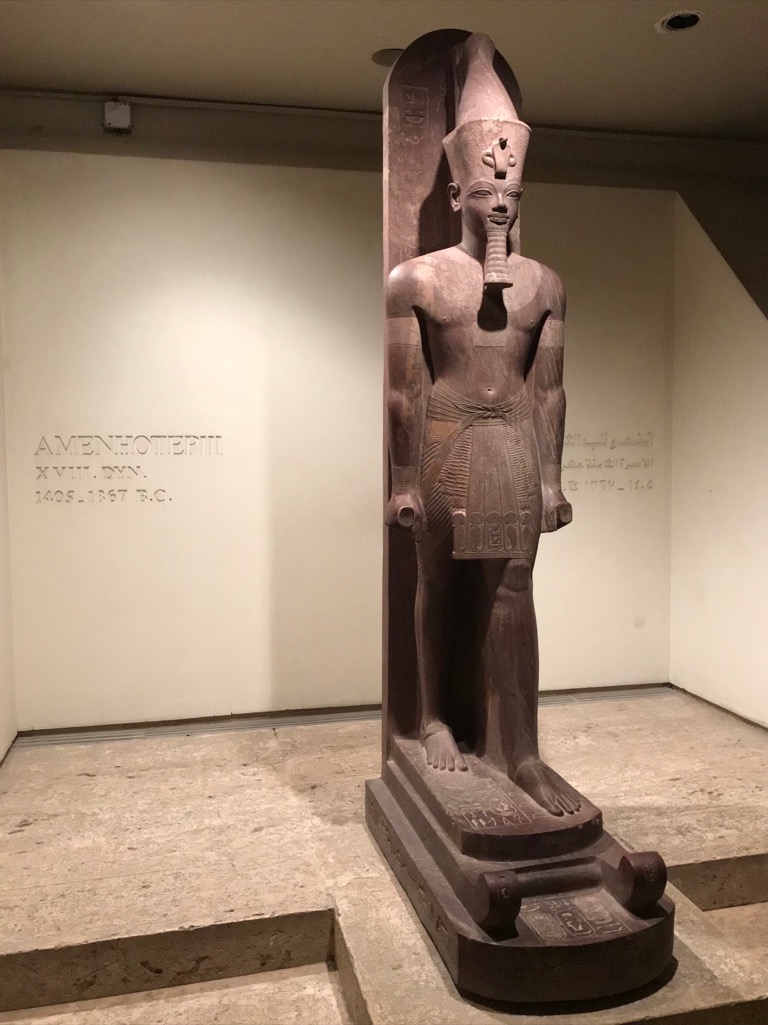on
Dendera Temple
We had another early departure for a two-hour bus ride to Dendera Temple. The water is a bit low on the Nile this time of year, so the boat can’t sail closer and make it a 20-minute bus ride.
The bus ride was through an agricultural region along the Nile. Lots of donkey carts and people working by hand in the fields.
The primary temple is the Temple of Hathor that we see was build during the Ptolemic Period, but there has been a temple on the site since the Middle Kingdom.
This temple was converted to Christianity when the Romans came to power, and then was lived in when the Arabs attacked. It is in the process of having the soot cleaned off the ceiling paintings.
Some of the small rooms have excellent paint after 2300 years.
You can go on the roof and look out at the complex which is surrounded by a mud brick wall.
There is a small crypt that you crawl down a ladder and then through a 2 ft by 2 ft hole to get into. It’s not very big once you get down there.
There are some very nice carvings down there. Here is Horus the falcon.
Back up in the main temples, you can see graffiti from visitors over the years.
In our free time in the late afternoon we went to the Luxor Museum. It’s a small museum, but it does have some nice statues.
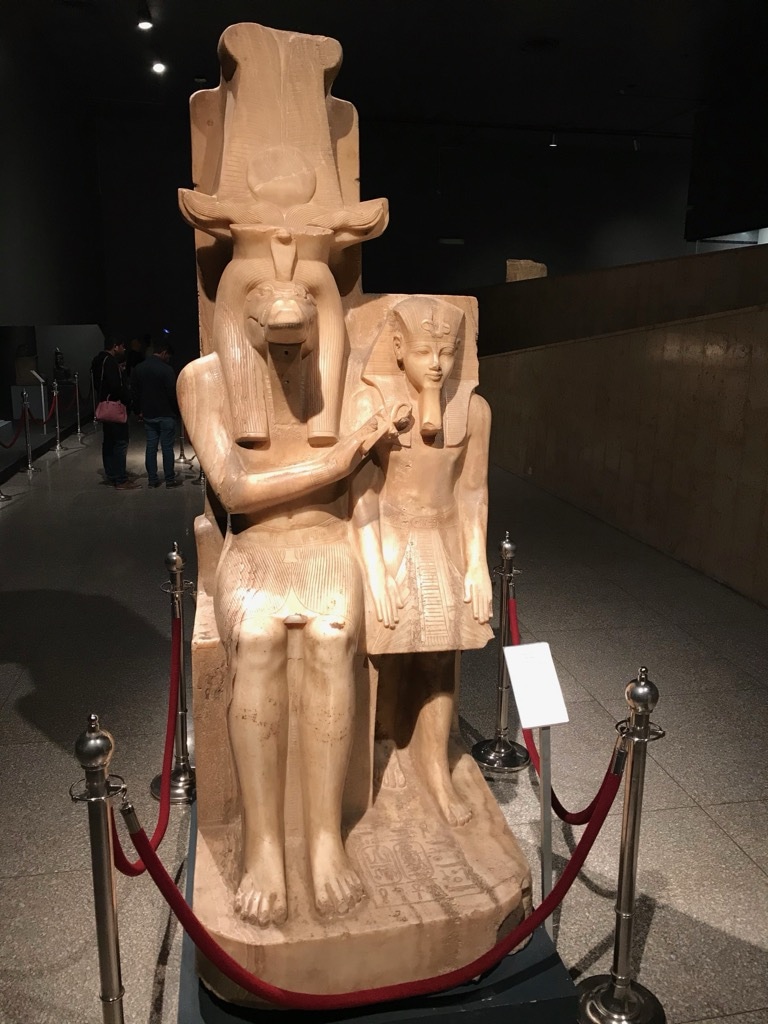
Akhenaten was the “heretic” Pharaoh that attempted to switch to monotheism with a new god, Aten and abolish all the old gods. The priests of the old gods deposed him. Tutankhamen was likely his son.
